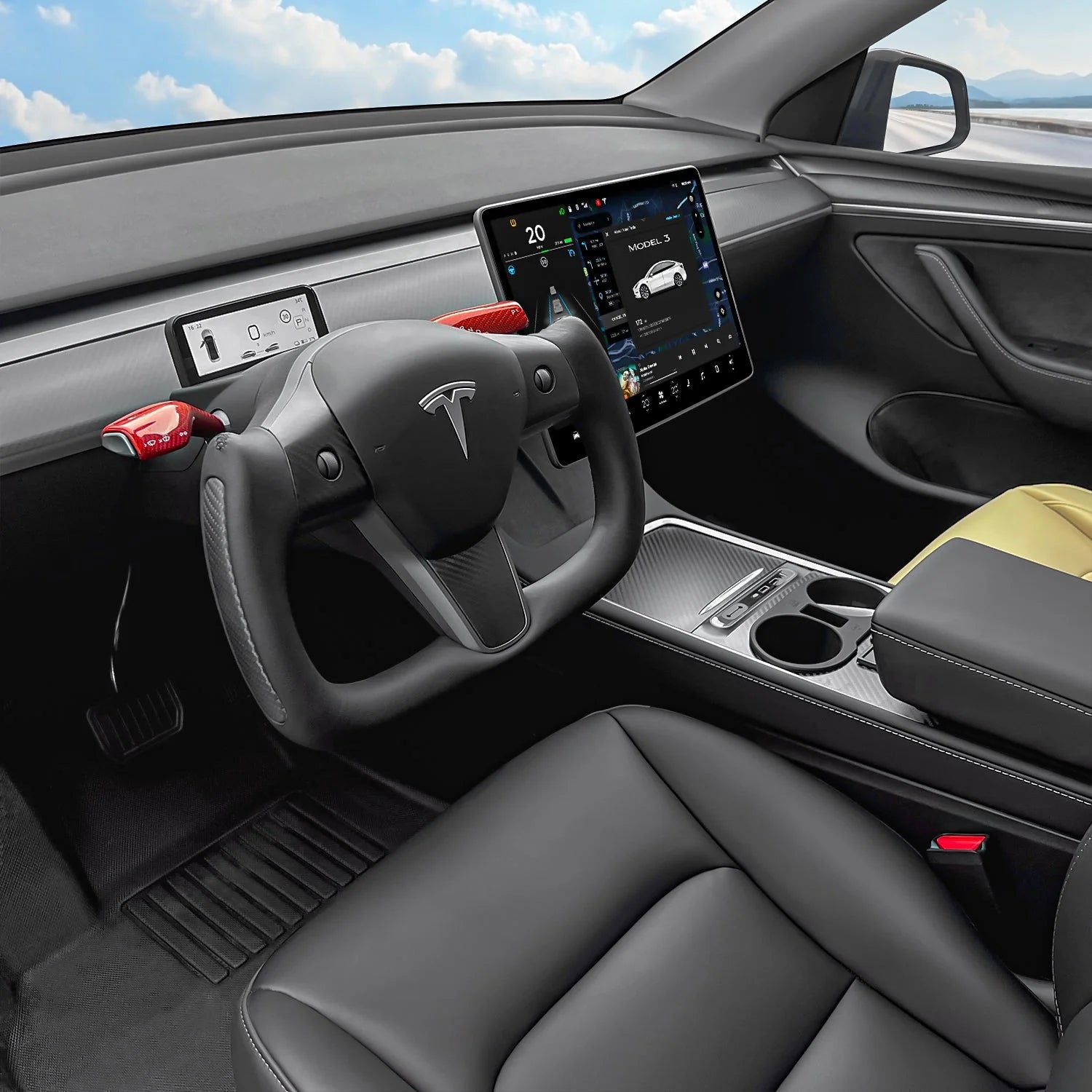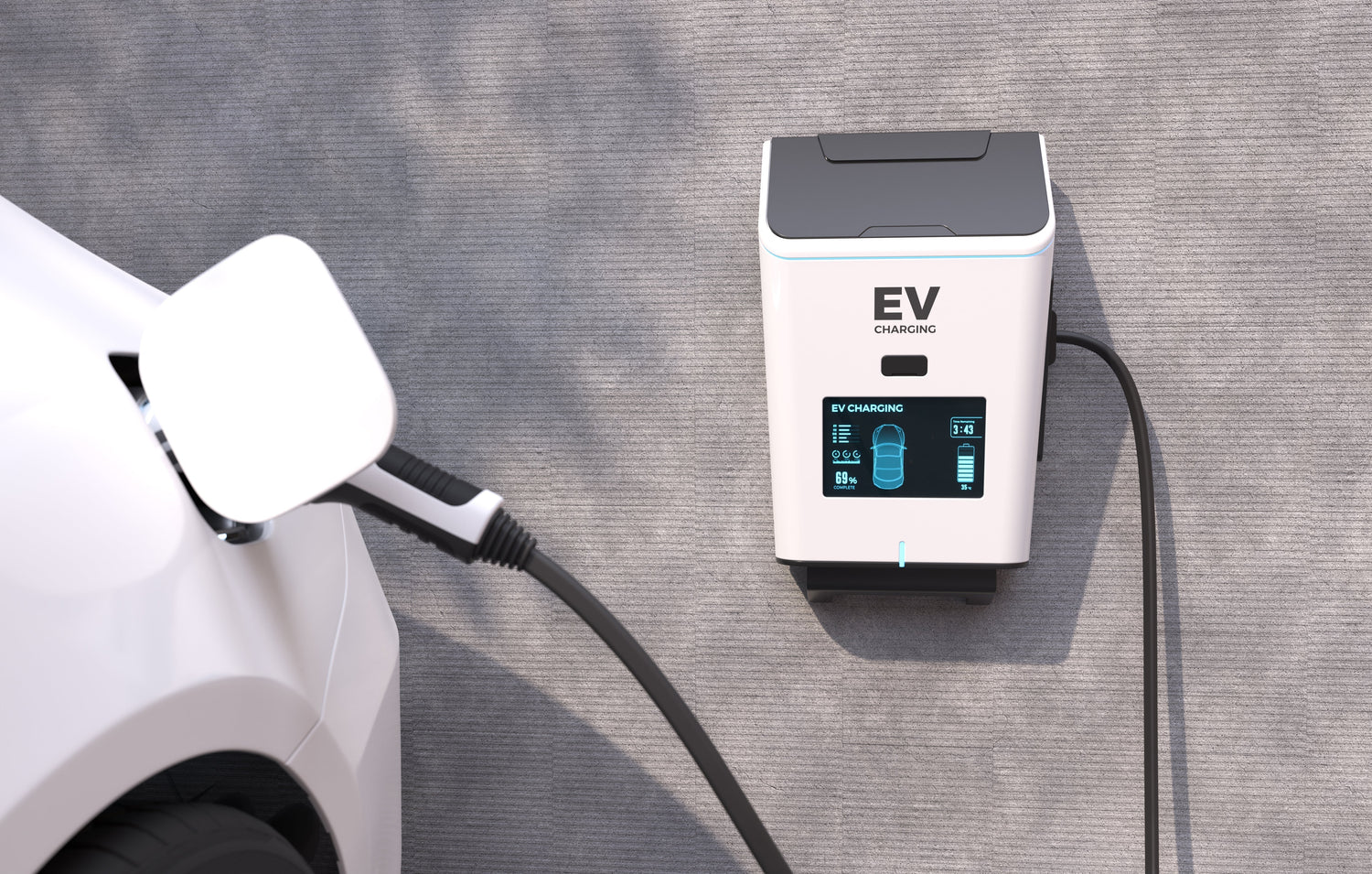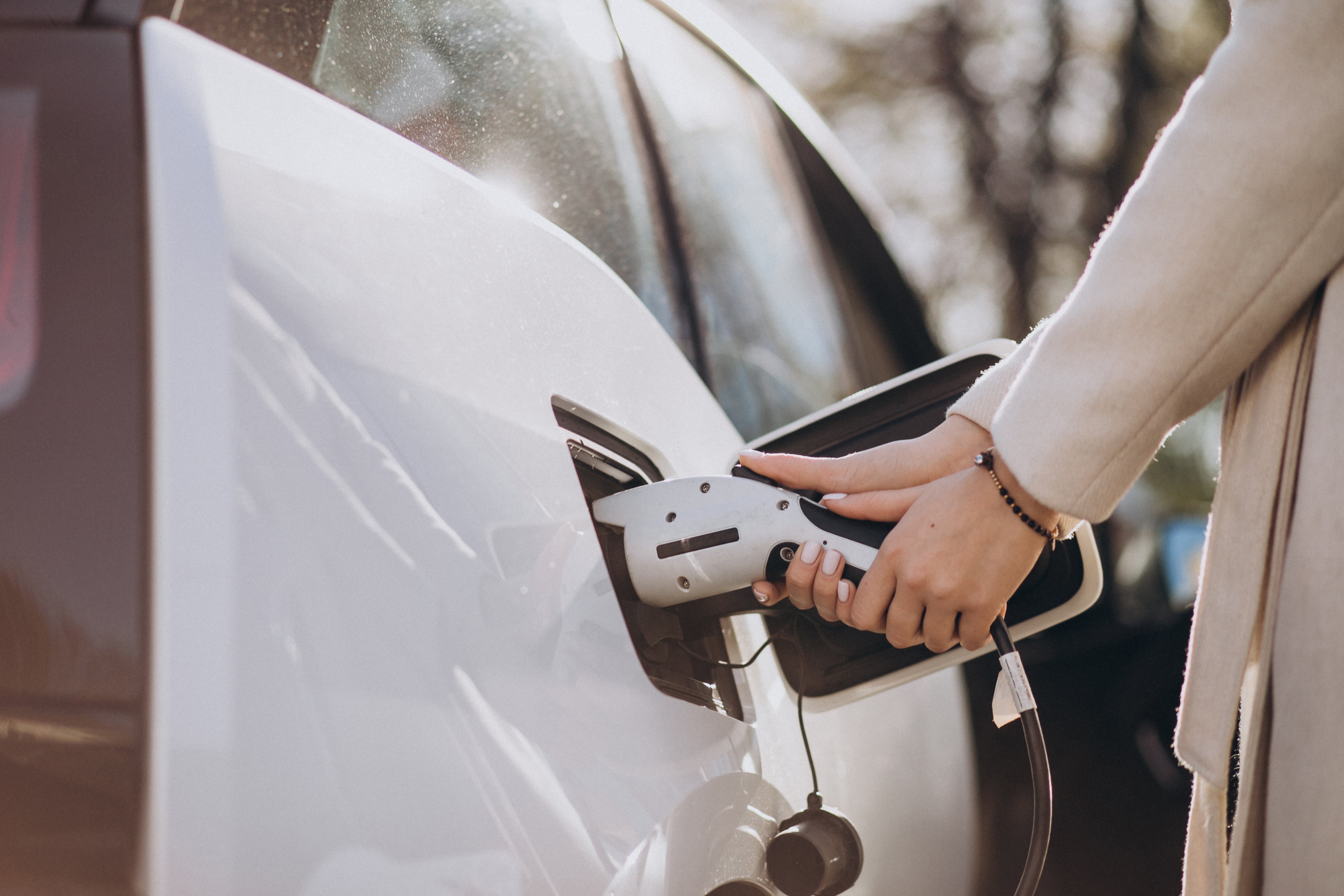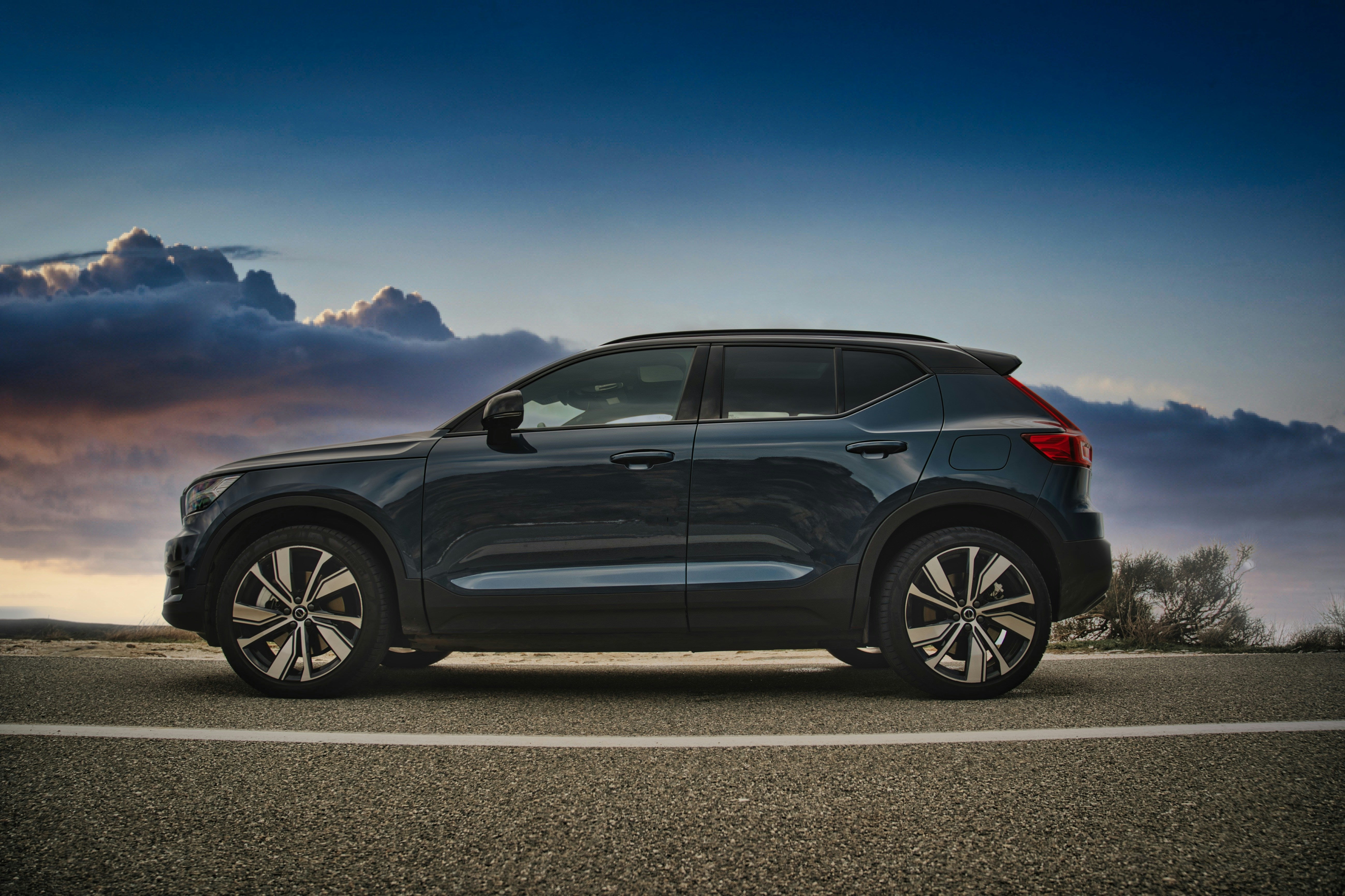Актуализирано на 09.09.2025 г.
CCS срещу CHAdeMO: Кой стандарт за зареждане трябва да изберете за вашето електрическо превозно средство? Светът на стандартите за зареждане е объркващ с електрическите превозни средства.
Не сте сигурни в разликите между CCS и CHAdeMO и се чудите кое ще ви пасне най-добре? Е, не се притеснявайте, защото в тази статия ще разгледаме всичко, което трябва да знаете за CCS и CHAdeMO зареждането, което ви дава увереността да бъдете информирани за лесно решение. С това сравнение опитните потребители на електромобили или тези, които тепърва започват да използват електромобили, няма да имат за какво да се притесняват, когато избират най-доброто зарядно устройство.
Нека започваме.
Какво е CCS зареждане?
CCS, което означава комбинирана система за таксуване, е стандарт за таксуване, който получи широко разпространение в Европа и Северна Америка. Системата свързва AC и DC зареждане в конфигурация на един порт, чрез който електрическо превозно средство може да се зарежда с конфигурации с променлив или постоянен ток.
Какво е CHAdeMO Charging?
Другият стандарт за електрически превозни средства, който е популярен, но с осиновявания основно в Азия и част от Европа и Северна Америка, е CHAdeMO. Разработен в Япония, CHAdeMO има DC бързо зареждане за основен продукт от самото начало и е сред лидерите в разработването на своето оборудване за зареждане от много години.
Защо е важно да се разберат разликите между стандартите за зареждане CCS и CHAdeMO?
Важно е да се разбере разликата между CCS и CHAdeMO зареждане защото:
- Съвместимост на вашия автомобил: Не всички електрически превозни средства споделят един и същ стандарт за зареждане. Познаването на този, който използва вашата кола, ви гарантира, че можете да намерите съвместими точки за зареждане.
- Скорост на зареждане: А Зарядно устройство CCS може да бъде по-бързо (до 350 kW), докато зарядно устройство CHAdeMO обикновено достига максимална мощност от 100 kW. По-бързото зареждане означава по-малко чакане.
- Наличност: CCS е разпространен в Северна Америка и Европа, докато CHAdeMO се използва главно в Япония и някои региони на Азия. С правилния стандарт става по-лесно да се намерят зарядни устройства.
- Подготовка за бъдещето: Все повече автомобилни производители и правителства подкрепят CCS, така че това може да е най-подходящият вариант за дългосрочна употреба.
- Адаптери и лекота на употреба: Предлагат се някои адаптери, но не са подходящи за всеки автомобил. Спазването на правилния стандарт избягва проблеми със зареждането.
- Подкрепа от правителството и индустрията: Правителствата и индустриите, в повечето случаи, инвестират в CCS, следователно това ще бъде най-разпространеният стандарт в бъдеще.
Разбирането на тези разлики позволява на собствениците на електрически превозни средства да изберат най-добрата алтернатива за постигане на по-лесно и по-бързо зареждане.
CCS срещу CHAdeMO Зареждане: Какви са разликите?
И така, разликата между CCS и CHAdeMO се увеличава, когато решавате какви операции за презареждане на вашия електрически автомобил. Няколко разлики между тези два стандарта за бързо зареждане с постоянен ток включват дизайна на конекторите, скоростта на зареждане и глобалното приемане.
Дизайн на конектора:
- CCS: Комбинираната система за зареждане, която комбинира всички зарядни пинове в един конектор за зареждане с променлив и постоянен ток, прави електрическото превозно средство много по-гъвкаво и удобно за неговия собственик. Интегрираният дизайн улеснява много целия процес на зареждане и спомага за съвместимостта с различни зарядни станции.
- ЧАдеМО: В този аспект, CHAdeMO използва сравнително по-голям щепсел, притежаван от много пинове, които са предназначени единствено за функциите на бързо зареждане с постоянен ток. Този вид уникален интерфейс вероятно означава, че той няма да бъде широко разпространен в световната търговия, както интерфейсът CCS.
Глобално приемане:
- CCS: CCS е най-използваният стандарт в Европа (CCS2), където почти всички големи автомобилни производители са го приели като основен стандарт за зареждане. Това широко разпространение гарантира, че превозните средства, оборудвани с CCS, са широко съвместими и достъпни в целия регион.
- ЧАдеМО: Това е японски стандарт. Той е възприет от различни пазари по света, макар и главно в Азия и части от Европа. Въпреки че не е толкова разпространен в световен мащаб, колкото CCS, CHAdeMO все още поддържа значително присъствие в региони, където е широко възприет.
CCS срещу CHAdeMO: Кой стандарт е по-рентабилен за ежедневно зареждане на електрически превозни средства?
Носенето на адаптер CCS към CHADEMO може да бъде спасение, ако вашето електрическо превозно средство има CHAdeMO порт, но най-често намирате CCS станции наблизо. Все пак адаптерите не са магически преки пътища. Те правят повече от това просто да позволяват на един щепсел да пасне в друг; те управляват комуникацията между колата и зарядното устройство, а това може да ограничи максималната мощност.
На практика, пречката е самият стандарт CHAdeMO. Дори ако станцията CCS е способна да генерира 350 kW, адаптерът обикновено ще ограничи сесията до около 50–100 kW. Това означава, че зареждането отнема повече време, отколкото при оригинална CCS връзка. Загубата на ефективност не е огромна, но скоростта е обвързана с по-бавната система.
От положителната страна, сертифицираните адаптери са създадени да бъдат безопасни. Те не увреждат батерията и за много шофьори премахват стреса от това дали дълго пътуване ще ги остави без съвместим щепсел.
Кой стандарт е по-популярен в Европа?
Може да се каже, че сред всички протоколи за зареждане на електрически превозни средства, CCS е императорът на европейските страни.
Сред трите архитектури, CCS досега е получила най-широко разпространение от автомобилните производители, доставчиците на горивна инфраструктура и правителствата на този континент от въвеждането си.
Причини за популярността на CCS в Европа:
- Привеждане в съответствие с индустрията: Благодарение на силната подкрепа от европейската автомобилна индустрия, възможностите за зареждане със CCS бяха включени в плановете за проектиране на превозни средства.
- Зарядна инфраструктура: Европа инвестира сериозно в инфраструктура за зареждане на CCS.
- Правителствени политики: Директивите на ЕС, заедно с националните разпоредби, са в сила в подкрепа на улавянето и съхранението на въглероден диоксид (CCS) и предлагат бонуси за неговото популяризиране.
- Оперативна съвместимост: Собствениците на континенталните електрически превозни средства няма да имат проблеми със зареждането им, тъй като CCS се превърна в стандартизиран дизайн с един порт.
Скорост на зареждане
Бързозарядните станции CCS и CHAdeMO всъщност зареждат със скорост, която зависи от много фактори, включително изходната мощност на зарядната станция, потенциала на системата за зареждане на автомобила и състоянието на батерията на автомобила по време на зареждане.
- CCS: CCS предлага широк диапазон от мощност от 50 kW до 350 kW в много бързо зареждащи се електрически превозни средства, следователно правилно оборудваните превозни средства с CCS гарантират добър пробег за кратки периоди.
- ЧАдеМО: Мощността на зарядните станции CHAdeMO обикновено е между 50 kW и 100 kW, въпреки че това се променя с появата на нови станции, способни да отчитат по-висока мощност. CHAdeMO не е толкова бърза, колкото CCS, но предлага много ефективна услуга за бързо зареждане с постоянен ток, която гарантира, че водачите на електрически превозни средства ще изминат възможно най-краткия период от време, особено по време на пътувания.
Марки, които го използват
Ето някои от марките, които използват CCS и CHAdeMO:
CCS:
- Европейски автомобилни производители: Включително компании като Volkswagen, BMW, Audi и Mercedes-Benz, са приели CCS като стандартен протокол за зареждане на всички свои електрически превозни средства в цяла Европа.
- Северноамерикански автомобилни производители: Ford, General Motors и други северноамерикански автомобилни производители използват CCS за зареждане на електрически превозни средства в Северна Америка. Скоро много северноамерикански производители ще започнат да произвеждат превозни средства с NACS (Северноамерикански стандарт за зареждане), който преди това се използваше само от Tesla.
- Глобално приемане: CCS в момента е световен стандарт и е широко приет, като повечето производители на автомобили по света започват да внедряват CCS за своята гама от електрически превозни средства.
ЧАдеМО:
- Японски производители на оригинално оборудване (OEM): Nissan, Mitsubishi, Toyota и други са произвели електрически превозни средства с вградено зареждане CHAdeMO за домашния си пазар в Япония и други части на Азия.
- Международно присъствие: CHAdeMO е по-разпространен в Азия и малко непознат в някои райони на Европа и Северна Америка, но с други думи, CCS адаптерите са сравнително често срещани. Някои немски марки като Porsche и Mercedes също са пуснали CHAdeMO автомобили, специално предназначени за японския пазар.
Мога ли да зареждам моя Nissan Leaf със зарядно устройство CCS?
Да, зарядно устройство CCS може да зарежда Nissan Leaf с помощта на адаптер като... CCS2 към CHAdeMOСледователно, това е интерфейс между зарядната точка CCS и порта CHAdeMO, който ще бъде монтиран във вашия автомобил. Така че голямата разлика би променила играта за всички собственици на Nissan Leaf. Сега, с инфраструктурата за зареждане, те имат много по-голям потенциал.
The CCS към CHAdeMO Адаптерът е особено полезен в региони, където зарядните устройства CCS са по-разпространени от тези CHAdeMO. С този адаптер процесът на зареждане е лесен: свържете щепсела CCS към адаптера и след това свържете адаптера към порта за зареждане на вашия автомобил.
Това е толкова важно, защото трябва да се уверите, че адаптерът CHAdeMO CCS е съвместим с марката на превозното средство и с всички спецификации, които станцията за зареждане трябва да се радва на приятно зареждане.
CCS към CHAdeMO: Адаптерите намаляват ли скоростта или ефективността на зареждане?
Носенето на адаптер CCS към Chademo може да бъде спасение, ако вашето електрическо превозно средство има CHAdeMO порт, но най-често намирате CCS станции наблизо. Все пак адаптерите не са магически преки пътища. Те правят повече от това просто да позволяват на един щепсел да пасне в друг; те управляват комуникацията между колата и зарядното устройство, а това може да ограничи максималната мощност.
На практика, пречката е самият стандарт CHAdeMO. Дори ако станцията CCS е способна да генерира 350 kW, адаптерът обикновено ще ограничи сесията до около 50–100 kW. Това означава, че зареждането отнема повече време, отколкото при оригинална CCS връзка. Загубата на ефективност не е огромна, но скоростта е обвързана с по-бавната система.
От положителната страна, сертифицираните адаптери са създадени да бъдат безопасни. Те не увреждат батерията и за много шофьори премахват стреса от това дали дълго пътуване ще ги остави без съвместим щепсел.
CCS1 и CCS2 съвместими ли са с CHAdeMO?
CCS1 и CCS2 са видове комбинирана система за таксуване (CCS) използва се за бързо зареждане на електрически превозни средства. CCS1 се използва в Северна Америка, докато CCS2 е стандарт в Европа и други региони. И двата типа позволяват на електрическите превозни средства да се зареждат бързо с постоянен ток и имат сходен дизайн на своите пинове и методи за комуникация.
CCS1 и CCS2 обаче не са съвместими с CHAdeMO, друг стандарт за бързо зареждане от Япония. CHAdeMO конекторите изглеждат различно и използват различна настройка на щифтовете от CCS конекторите, така че не могат да се свързват директно към CCS станции за зареждане.
Налични са адаптери, които позволяват на оборудваните с CHAdeMO електромобили да използват CCS станции за зареждане, но е по-рядко за оборудваните с CCS електромобили да използват CHAdeMO станции поради технически предизвикателства.
Важно е собствениците на електрически превозни средства да знаят кои стандарти за таксуване поддръжката на техните превозни средства. Това им помага лесно да планират пътувания и да намират съвместими станции за зареждане. С нарастващото приемане на CCS в световен мащаб и наличието на адаптери, шофьорите на електрически превозни средства имат повече възможности за удобно и ефективно зареждане, където и да отидат.
Разбирането на стандартите и инфраструктурата за зареждане може да осигури плавно и безпроблемно изживяване при зареждане за всички потребители на EV, което прави пътуването на дълги разстояния по-практично и подкрепя по-широкия преход към електрическа мобилност.
Адаптерът CCS към CHAdeMO интелигентна инвестиция ли е за европейските собственици на електрически превозни средства?
За европейските шофьори на електрически превозни средства, стойността на адаптер chademo ccs зависи много от това къде и как пътуват.
В Западна Европа CCS2 вече е по-скоро правило, отколкото изключение. За собствениците на автомобил CHAdeMO, адаптерът може да отключи хиляди допълнителни места за зареждане – особено по магистралите. Само тази гъвкавост често оправдава покупката.
Но не всеки има нужда от такъв. Ако по-голямата част от зареждането се случва у дома или в региони, където CHAdeMO все още е често срещан (например части от Източна Европа или някои азиатски пазари), тогава адаптерът може да остане неизползван.
Поглеждайки по-общо, CCS е очевидно посоката, в която се движи Европа. Наличието на адаптер осигурява на шофьорите на CHAdeMO по-плавен преход и запазва автомобилите им практични, докато не дойде време за надграждане до модел, оборудван с CCS.
Адаптерът CCS към CHAdeMO интелигентна инвестиция ли е за европейските собственици на електрически превозни средства?
За европейските шофьори на електрически превозни средства, стойността на адаптер chademo ccs зависи много от това къде и как пътуват.
В Западна Европа CCS2 вече е по-скоро правило, отколкото изключение. За собствениците на автомобил CHAdeMO, адаптерът може да отключи хиляди допълнителни места за зареждане – особено по магистралите. Само тази гъвкавост често оправдава покупката.
Но не всеки има нужда от такъв. Ако по-голямата част от зареждането се случва у дома или в региони, където CHAdeMO все още е често срещан (например части от Източна Европа или някои азиатски пазари), тогава адаптерът може да остане неизползван.
Поглеждайки по-общо, CCS е очевидно посоката, в която се движи Европа. Наличието на адаптер осигурява на шофьорите на CHAdeMO по-плавен преход и запазва автомобилите им практични, докато не дойде време за надграждане до модел, оборудван с CCS.
Колко важна е възможността за бързо зареждане при избора на електромобил или зарядна станция?
Бързото зареждане е важно при избора на електромобил или зарядна станция, защото:
- Спестява време: Бързите зарядни устройства зареждат батерията ви по-бързо, така че не е нужно да чакате толкова дълго.
- Подходящо за дълги пътувания: За тези, които пътуват много, бързото зареждане означава, че можете да спрете за кратко, вместо да чакате с часове.
- Допълнителни възможности за зареждане: Повечето зарядни станции вече имат бързо зареждане. Ако колата ви може да го използва, ще имате повече места за зареждане.
- Състояние на батерията: Бързото зареждане е удобно, но многократната употреба може да бъде вредна за батерията в дългосрочен план. Някои електрически превозни средства се справят с това по-добре от други.
- Подготовка за бъдещето: Технологията за електрически превозни средства се усъвършенства и се изграждат все повече бързи зарядни устройства. Автомобил с бързо зареждане ще бъде по-лесен за зареждане в бъдеще.
Ако шофирате предимно на кратки разстояния и зареждате у дома, бързото зареждане може да не е основен приоритет. Въпреки това, за пътувания с кола и удобство, това е толкова удобно!
Заключителни думи
В света на електрическите автомобили, изборът между... CCS срещу CHAdeMO Зарядните устройства са важни. Докато зареждането с CCS е най-разпространено в Европа и Северна Америка, CHAdeMo е често срещано в Азия. Обърнете специално внимание на преобладаващия стандарт за зареждане във вашия регион. Силно препоръчваме на европейските ни клиенти да изберат превозно средство с CCS2, тъй като повечето зарядни устройства имат CCS2 конектори. Разликите в скоростта и поддържаните марки превозни средства могат да ви помогнат да определите своя избор.
И двете работят с електрически автомобили, така че да могат да се зареждат бързо и лесно, съответно, което прави електрическите автомобили перфектен начин за екологично чист транспорт.




